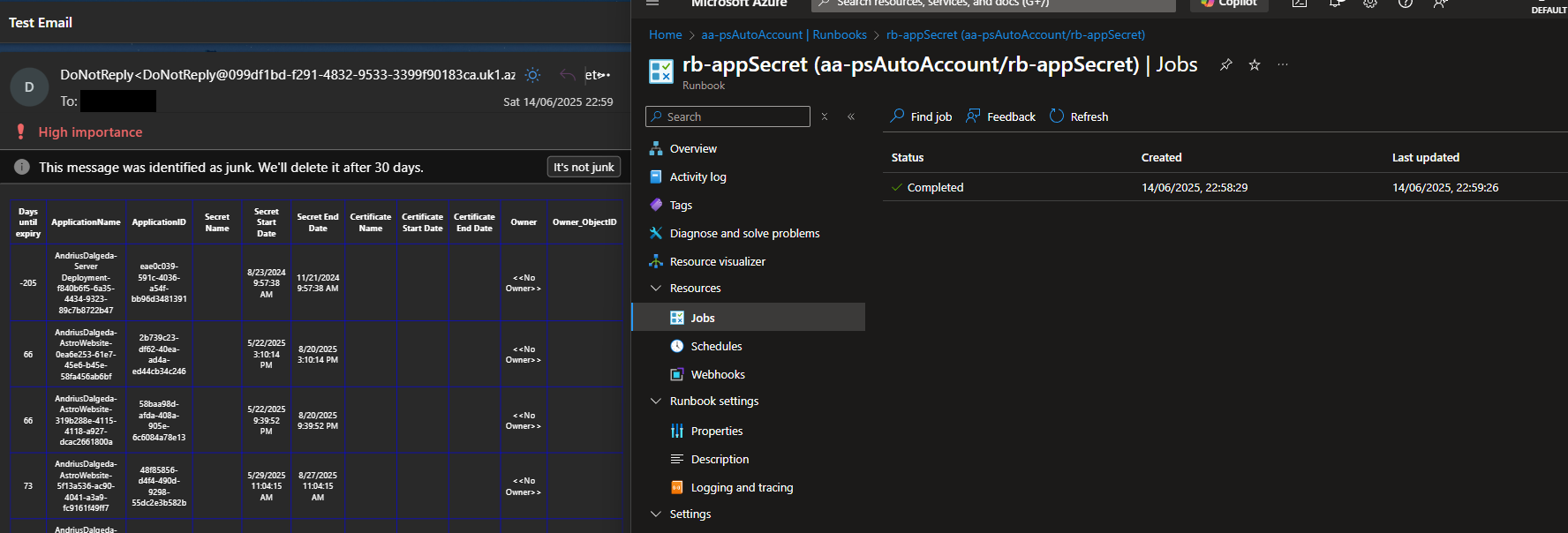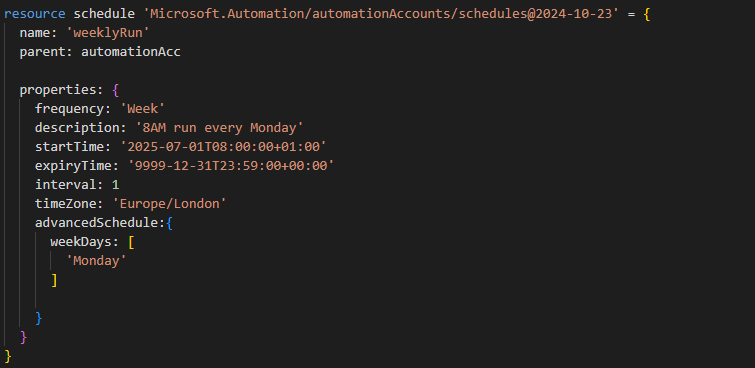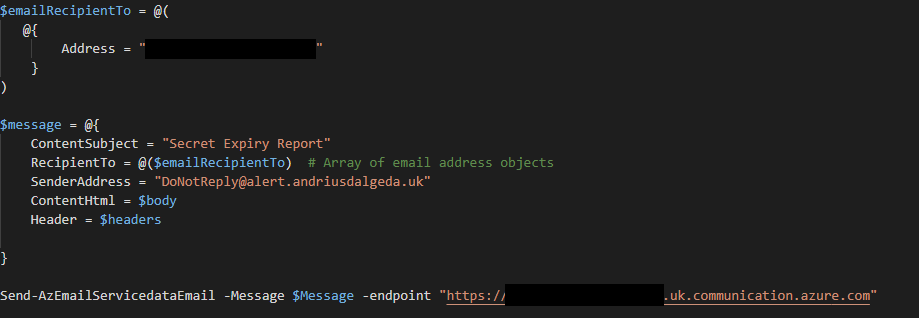
Azure app secret expiry email report
Runbook returning a weekly email report of expired and expiring app secrets & certificates
No app secrets or expiring credentials are using during the deployment/for the runbook
Skip to the deployment portion
Summary:
Runbook runs a powershell script that authenticates with the automation account’s managed identity, the script gets all the app secrets & certificates along with their expiry time.
The script then formats the results into HTML and sends out an email using Azure Email Communication Services
All required resources are made for a ‘from-scratch’ deployment but can be altered
If used in a prod environment consider using a custom domain for the Email Communication Service to give the sending address a friendly name
Requirements:
Certain Bicep features are required, for simplicity just import the bicepconfig.json file
Experimental features & the Graph extension are required to add app roles to the managed identity within the Bicep file itself, without needing a secondary deployment script
The Microsoft Graph powershell module is also required locally to deploy this template
These features are still considered ‘experimental’ but are stable using the versions within the bicepconfig.json


Usage
Download and deploy the included Bicep template and associated files - note that all the files within the linked repo are required
Input all the desired params and customise the parameters of the ‘schedule’ resource
Set the desired frequency, start date (must be in the future), time zone and week days if running on a weekly schedule
For simplicity this resource can be removed and manually set up after deployment

Once deployed you will only need to edit the runbook and populate:
-
$emailRecipientTo
Supports array so you can include multiple emails -
SenderAddress
Address that the email will be sent from - this is outputted in the deployment so it can be copy and pasted from there, or copy it from the Email Communication Service -
-endpoint
Endpoint of the Communication service - also outputted in the deployment but be found under the main Communication Service created
